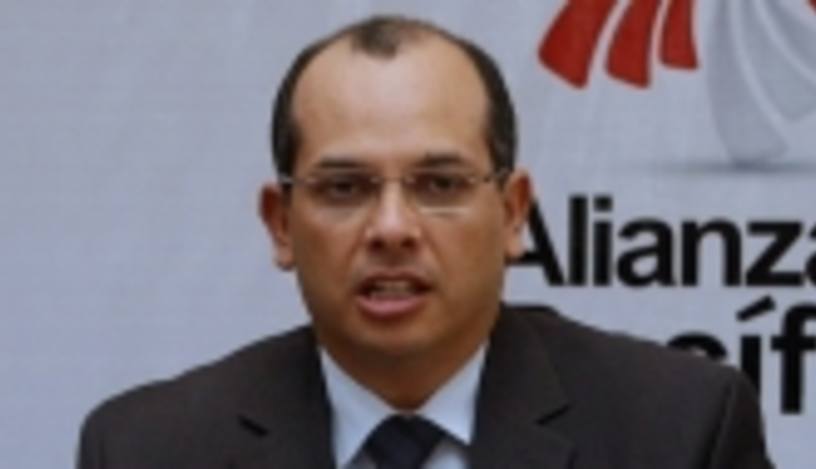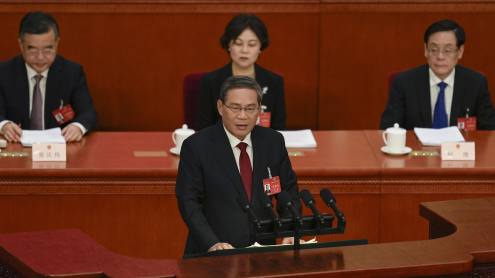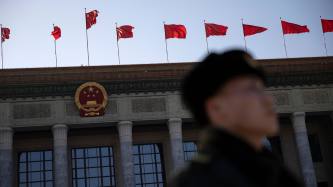Peru's economy has been growing at a consistently impressive pace over the past few years, and this growth shows no immediate signs of abating, with a projected gross domestic product (GDP) rise of 6.3% for 2013. This compares favourably with some of Latin America's larger markets, such as Chile (5.5%), Mexico (4%) and Brazil (3%). However, no country can rest on its laurels, and this is a fact not lost on Peru's finance minister, Luis Castilla.
Speaking to The Banker during the London stop of a European roadshow, Mr Castilla is keen to discuss the progress being made with regards to the government's comprehensive reform package, which it is hoped will reduce bureaucracy and bring about improvements in the country's labour market and capital markets. The government estimates that the whole restructuring package will free up an extra $15bn-worth of investment over the coming 12 months.
Global factors
Such reform and investment is essential in Peru, says Mr Castilla. The country is highly dependent on international demand for its commodities, and has a limited, overworked infrastructure, a large informal employment market and limited financing alternatives for businesses. “[These reforms] will enable us to face the changes in a world where global conditions are less favourable, with slower growth in China, recession in Europe and a slow recovery in the US,” says Mr Castilla. “We need to look at ways in which we can cope with these new conditions. My top priority right now is to keep growth momentum high.”
Peru's economy is still widely seen as being overly reliant on external demand for its raw materials, and some 60% of the country’s exports are commodities, points out Mr Castilla, who says that one of the main goals of the reform package is to counter this with a larger services sector. “We need to diversify to higher value-added sectors, and more towards services. That means upgrading skills, having the right infrastructure in place, and facilitating more investment in research and development and technology,” he says.
Another goal of the reform package, adds Mr Castilla, is for Peru to become a more formal economy. “Although unemployment has declined in big cities such as Lima, six out of 10 Peruvians still have informal jobs, no access to social security or healthcare, and don’t pay taxes," he says. "We need to work towards reducing the cost of formality and labour costs.”
Lowering such costs and increasing investments are indeed crucial, and thus a lot of effort has gone into facilitating private sector investments. A new special delivery unit has been set up under the responsibility of the Ministry of Finance to help overcome obstacles in the execution of existing investment projects, as well as anticipating issues for new ones. “The unit has two main tasks: one is finding out what bottlenecks [investment projects] face, and the other is thinking about ways to push regulation to facilitate processes. We are re-engineering processes in the government to be more effective,” says Mr Castilla.
Capital markets
As part of its new strategy, Peru's government is working on reforming its capital markets, in the hope that it will give greater flexibility to institutional investors as well as encourage independent workers to enrol in pension funds – something that will also achieve the obvious goal of improving social security.
Peru’s corporate governance code will also be updated and brought up to international standards in an effort to increase transparency. Meanwhile, new measures will give businesses access to funding tools other than bank loans, which still cover about 70% of corporate funding needs in Peru. These initiatives include simplifying payment procedures and eliminating certain taxation on bonds, as well as reducing the cost of listing on the stock exchange.
It is hoped that such moves will have a positive impact upon small and medium-sized enterprises (SMEs). “It is very important to reduce entry costs for SMEs, in terms of the commission they are charged by the stock exchange, and to make it easier to participate [in the capital markets],” says Mr Castilla. “For example, [before a flotation] a firm is asked to have a minimum of two ratings – from two rating agencies. For SMEs this is costly. We should [ask] for one, and that should be enough. We have very shallow capital markets in comparison to our neighbours; Colombia and Chile are larger, deeper and more liquid.”
In alliance
Ensuring that Peru's capital markets are healthily competitive has become something of a necessity ever since the launch of the Mercado Integrado Latinoamericano, or MILA, a project that has integrated the stock markets of Peru, Colombia and Chile, with Mexico set to follow at a later stage. Chilean businesses that have, say, operations in Colombia and Peru will be able to tap a broader investor base, and investors will have quick and simple access to a larger market.
However, for MILA to fulfil its potential, there is an onus on Peru to harmonise regulation with its partners. While Peru applies a 5% tax on capital gains, Colombia and Chile offer a tax-free treatment for stocks that meet certain liquidity parameters. “As we harmonise our legislation in MILA, we’ll have the same capital gain tax treatment as the other countries,” says Mr Castilla.
This harmonisation process between Peru, Chile, Colombia and Mexico does not just stop at the capital markets, however. The links between the four countries have gone beyond MILA, and as of June last year, the Pacific Alliance, a free-trade group comprising the quartet, was officially launched. It is already attracting the attention of other Latin American countries – such as potential members Costa Rica (which has received approval to become a permanent member), Panama and Guatemala – as well as other economies based around the Pacific Ocean, among them Canada, Australia, Japan and New Zealand. Observers also include Spain – which has strong historical and business links to the countries that make up the alliance – as well as Uruguay, France and Portugal.
Looking at both population and trade numbers, it is apparent why the Pacific Alliance appeals to so many economies. “The Pacific Alliance market is very important; it has 250 million people, it represents half of all trade in Latin America and one-third of Latin America’s GDP,” says Mr Castilla. “Peru is a nice growth story but if you pull together like-minded countries with very open policies, it becomes a more attractive market for foreign investors.”
Such talks of integration have moved up a notch in recent months. Finance ministers from all of the Pacific Alliance countries met at the World Economic Forum's annual Latin America gathering in Peru earlier this year, and will be meeting again in Chile later this month. Mr Castilla says: “In Latin America, most integration schemes have failed; it is the first time something seems to be working. We want to see how we can accelerate this process.”
High-level commitment, shared goals and compatible leadership among the countries involved help to explain the apparent success of the Pacific Alliance. “There is a lot of chemistry among the presidents,” says Mr Castilla. “They are all young, they get along and they want this to work. [The alliance is working because of] a sense of opportunity; we need to consolidate our ties with the fast-growing economies in Asia beside China, [as many] east Asian countries are outperformers... We are conscious that if we pull our efforts together, investors will look beyond Brazil.”
With Peru’s internal efforts mirrored by like-minded neighbours, it is hard to imagine the country missing its targets.













